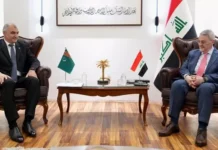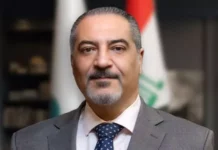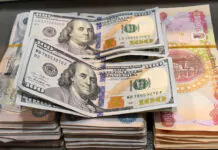Some nations perform the procedure of removing zeros from a currency in order to revalue the national currency and make financial transactions simpler. This is accomplished by reducing the nominal value of the currency by a predetermined number of zeros, making it appear less inflationary and more stable.
For instance, if the currency is the “dinar” and its value is 1,000 dinars, its value will be reduced by three zeros to one new dinar.
In order to combat inflation, zeros might be removed. When there is a lot of inflation in a currency, the nominal values can get very high, making it impossible to buy a lot of it for daily transactions. Getting rid of zeros can make accounting and financial transactions easier and boost confidence in the national currency; This may help the country’s image in the eyes of investors and the rest of the world.
Printing new currency, modifying accounting systems, and providing training on how to use the new currency are all potential obstacles that can arise from deleting zeros. Residents and customers may initially be confused, and if the deletion procedure is not properly implemented, it may cause disruptions to the economy. According to experts, erasing zeros is not a solution to all economic issues; rather, it is a procedure that necessitates careful planning and execution to achieve the desired outcomes.
Turkey, which removed six zeros from its currency in 2005, Brazil on multiple occasions in the 1980s and 1990s, Zimbabwe, which removed twelve zeros from its currency in 2009, and Venezuela, which removed five zeros in 2018, are all examples of nations that have taken this action. The number of instances in which currency zeros have been removed is estimated to be 70 worldwide since 1960.
“The project to remove zeros from the currency is still ongoing,” the Governor of the Central Bank of Iraq, Ali Al-Alaq, stated in a new statement, referring to the removal of three zeros from the Iraqi dinar. One dinar note from the new currency, for instance, will take the place of a 1,000-dinar banknote; five thousand dinars will be worth five dinars, ten thousand dinars will be worth ten dinars, and so on.
Experts say that removing the zeros does not change the actual value of the money that people own. However, this step helps people and businesses buy and sell things easier and makes the financial amounts easier to understand. By omitting three zeros, they can be reduced to just one thousand and one dinars instead of dealing with enormous amounts like a trillion or a million (1,000,000 Iraqi dinars).
The fact that the Iraqi dinar can now buy more goods and services gives the population a positive psychological boost and makes it easier to issue small currencies like coins, enables the re-pricing of small goods at lower prices, facilitates their circulation and their survival in the markets, and removes zeros from the currency.
As a result, countries strive to eliminate zeros in order to reestablish investor and public trust in the local currency, increase demand for it, and make it more competitive with foreign currencies and less susceptible to substitution.
In an effort to remove liquidity from the market, reduce consumption, and lower prices, the policy of erasing zeros is frequently associated with broader economic reforms, such as raising interest rates on bank deposits to encourage people to save in banks and take advantage of high interest rates on their bank deposits.
In order for the country’s economy to eventually recover, this also entails utilizing this liquidity to expand productive projects, attract domestic and international investments, and create numerous job opportunities.
However, printing new banknotes may cost Iraq money if zeros are removed. For instance, after three zeros were removed from the Iraqi dinar, a 200-dinar banknote now represents 200,000 dinars. Consequently, four additional 50-dinar banknotes may be required instead of the 50,000-dinar banknote.
However, based on the results that are available, this may not have a significant impact on improving the local economy if it is not part of a package of economic reforms that help reduce the amount of money that circulates among people and stimulate the economy. This is especially true given that Iraq’s economy is based on oil, which necessitates stimulating other productive sectors in order to propel the local economy.
After it became clear that no plan could save the Iraqi dinar from its declining value, could the removal of zeros from the Iraqi dinar be an effective first step toward boosting the economy of Iraq?
Mazhar Muhammad Salih, the Iraqi government’s financial advisor, said in a statement that “the phenomenon of multiplying zeros in the monetary unit or adding zeros usually comes as a result of economies being exposed to rampant waves of inflation or sharp increases in the price level that continue for years due to wars, blockades, and conflicts that lead to financing the deficit of government budgets through the issuance of money.” He noted that the continuous rise in prices without stopping leads to the erosion of the value of the
Ahmed Hama Rashid, a former member of the Parliamentary Finance Committee, says, “Iraq is not prepared for the project of deleting zeros” and that “we always hear the Central Bank’s statements about implementing a project, only to then back down from implementation for undisclosed reasons.”
Abdul Rahman Al-Shaikhli, a banking consultant, recalls that poor printing presses were used to print the Iraqi dinar in the 1990s, and that “the first factor that stood in the way of the project was the discrepancy between the official exchange rate (now 1332 dinars per dollar) and the parallel market exchange rate (now rising above 1500 dinars) and it constituted an obstacle to the implementation of the project.” With regard to the project to remove zeros from the Iraqi
“The project will be successful if an exchange rate of one thousand dinars for every one dollar is reached,” he says. “Sinan Al-Shabibi, the late former governor of the Central Bank, aspired to the transformation of the exchange rate into one dinar for every one dollar, and at that time, deleting the three zeros will achieve its economic feasibility,” he stated.
Al-Shaikhli added that the call made by the government of former Prime Minister Nouri al-Maliki to legislate the infrastructure law, which was opposed by a number of political blocs in parliament at the time, as it leads to an increase in investments in Iraq through deferred payment, which limits the value of the monetary project, was the other factor that affected the project to remove zeros from the Iraqi currency.





